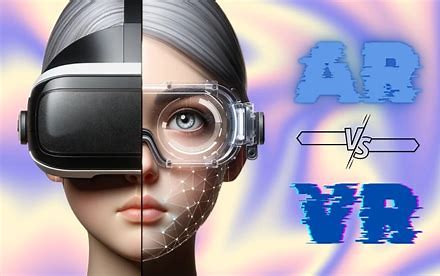By Rebecca Aboagyewah Oppong | Veebeckz Tech Media | Published on 26th May, 2025
For many, the terms “augmented reality” and “virtual reality” sound like interchangeable jargon from a sci-fi movie. But in the real world—especially in Africa—they represent two powerful technologies with radically different applications and implications. As Ghana and the broader continent navigate the tides of digital transformation, understanding the distinction between AR and VR is not just a matter of tech curiosity—it’s a strategic imperative.
Augmented Reality (AR) enhances the real world by overlaying digital information onto physical environments. Think of AR as a digital layer superimposed on what we see. With AR, your smartphone can turn a textbook into a 3D model, or a product label into a live video demonstration. It doesn’t replace reality; it enhances it. In contrast, Virtual Reality (VR) is a fully immersive experience that removes users from their physical environment and places them in a computer-generated world. When you wear a VR headset, you’re no longer sitting in your living room—you might be exploring a virtual museum, conducting surgery in a medical simulation, or piloting a drone in a warzone scenario.
While both technologies stem from the same innovation tree, their branches bear different fruit. AR thrives in accessibility. Because it only needs a smartphone or tablet camera, its adoption is more realistic in low-resource settings. A Ghanaian teacher with limited infrastructure could use an AR app to demonstrate human anatomy in 3D. A mechanic in Tamale could receive step-by-step visual instructions projected over a broken engine through AR glasses. AR blends with the world we already live in, enhancing our interaction with it in real-time.
VR, on the other hand, is about full immersion—and with that comes greater hardware requirements. A VR experience typically demands a headset, sensors, and often high-speed internet. While these requirements make widespread access in Africa more challenging for now, the use cases are powerful. VR has already shown immense potential in training and education, particularly in fields like healthcare, aviation, and engineering. A university in Accra might soon use VR simulations to train medical students on surgeries they can’t yet perform in real life. In the tourism sector, virtual experiences of the Cape Coast Castle or Mole National Park could attract interest, even before a traveler books a flight.
Both AR and VR are beginning to reshape sectors like education, healthcare, real estate, retail, and entertainment across Africa. Tech hubs in Lagos, Nairobi, and Accra are experimenting with locally made AR and VR apps. Ghanaian artists and cultural institutions are also tapping into these tools to preserve and showcase heritage in interactive ways. However, challenges still exist. Internet speed, affordability of devices, and lack of developer training are holding back large-scale adoption. Yet, these barriers are not permanent. Just as mobile phones leapfrogged landlines in Africa, lightweight and mobile-compatible versions of AR and VR are being built for our realities—not just those of Silicon Valley.
What’s more promising is the creative potential. African developers, content creators, educators, and entrepreneurs can leverage AR and VR not just to consume content, but to tell African stories, solve local problems, and design immersive tools for the next generation of digital natives. These technologies are not just about games or novelty—they are platforms for knowledge, cultural preservation, economic empowerment, and innovation.
The future of AR and VR in Africa will not be shaped solely by tech companies in the West, but by local minds who understand the nuance of our needs. As Ghana moves forward with its digital transformation agenda, now is the time to invest in training, infrastructure, and support for emerging realities—both augmented and virtual.
“Augmented reality adds to our world. Virtual reality builds a new one. Both are tools—Africa decides how to use them.”
